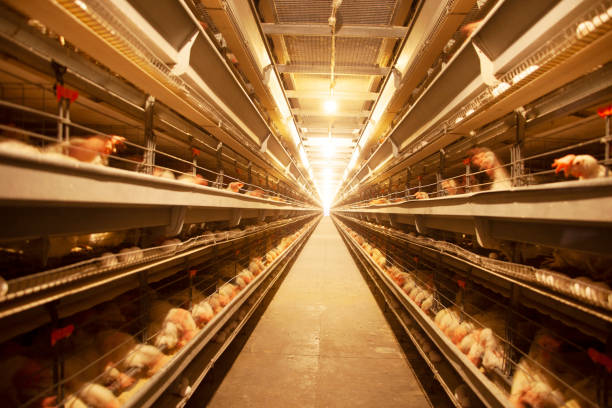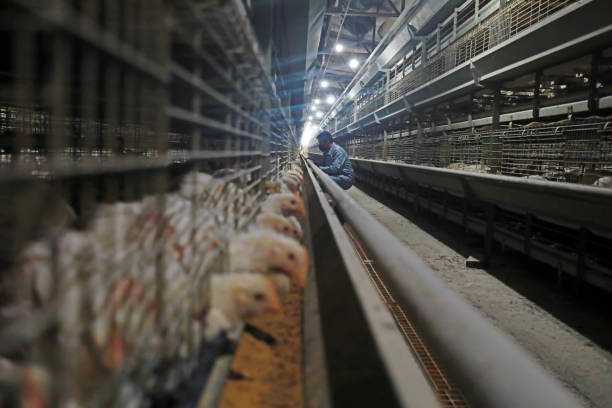Automatic Layer Cages for Sale in India: Boost Your Poultry Farm’s Efficiency
Automatic Layer Cages for Sale in India: Boost Your Poultry Farm’s Efficiency
The Indian poultry industry is booming, and with the increasing demand for eggs, poultry farmers are constantly seeking innovative ways to improve efficiency and productivity. Automatic layer cages have emerged as a game-changer, offering a modern and effective solution to manage layer hens. This comprehensive guide delves into the benefits of automatic layer cages, key features, factors to consider when purchasing, and why Livi Machinery stands out as a leading supplier in India.
Understanding Automatic Layer Cages
Automatic layer cages, also known as automated poultry cages, are housing systems designed to streamline the egg production process. Unlike traditional methods, these cages incorporate automated features for feeding, watering, egg collection, and manure removal, significantly reducing manual labor and improving overall farm management.
Why Choose Automatic Layer Cages? The Benefits
Investing in automatic layer cages offers a multitude of advantages for poultry farmers in India:
Increased Egg Production
Optimized Environment: Automatic layer cages provide a controlled environment that minimizes stress on hens, leading to higher egg production rates. Consistent temperature, ventilation, and lighting contribute to a comfortable and healthy living space for the birds.
Reduced Egg Breakage: Automated egg collection systems gently transport eggs, minimizing the risk of cracks and breakage. This ensures a higher percentage of marketable eggs, boosting profitability.
Efficient Resource Management: Precise control over feeding and watering minimizes waste and ensures that each hen receives the optimal nutrition required for laying eggs consistently.
Reduced Labor Costs
Automated Feeding: Automatic feeding systems deliver feed to each cage at predetermined intervals, eliminating the need for manual feeding. This reduces labor costs and ensures consistent feed distribution.
Automated Watering: Nipple drinkers provide a constant supply of fresh, clean water to hens, reducing the risk of contamination and minimizing water wastage.
Automated Egg Collection: Automatic egg collection systems gather eggs efficiently, transporting them to a central collection point. This reduces labor costs associated with manual egg collection and minimizes the risk of damage.
Automated Manure Removal: Automatic manure removal systems efficiently remove waste from the cages, reducing the build-up of ammonia and other harmful gases. This creates a healthier environment for the hens and minimizes the need for manual cleaning.
Improved Biosecurity
Reduced Bird Contact: Cages limit direct contact between birds, reducing the spread of diseases. Each cage acts as a small, isolated unit, preventing the transmission of pathogens.
Easy Cleaning and Disinfection: The design of automatic layer cages allows for easy cleaning and disinfection, minimizing the risk of disease outbreaks. Smooth surfaces and accessible areas make it easy to maintain a hygienic environment.
Controlled Environment: A controlled environment minimizes exposure to external contaminants, further reducing the risk of disease. Ventilation systems filter the air, removing dust, pathogens, and other pollutants.
Better Bird Welfare
Comfortable Living Space: Although cage systems have faced scrutiny regarding animal welfare in the past, modern automatic layer cages are designed to provide a comfortable living space for hens. Adequate space, proper ventilation, and consistent access to food and water contribute to the well-being of the birds.
Reduced Stress: A controlled environment reduces stress on hens, leading to improved health and productivity. Consistent temperature, humidity, and lighting create a predictable and comfortable living space for the birds.
Improved Health Monitoring: Automatic layer cages allow for easy monitoring of individual bird health. Farmers can quickly identify and isolate sick or injured birds, preventing the spread of disease and ensuring prompt treatment.
Key Features of Automatic Layer Cages
When considering automatic layer cages, it’s essential to understand the key features that contribute to their efficiency and effectiveness:
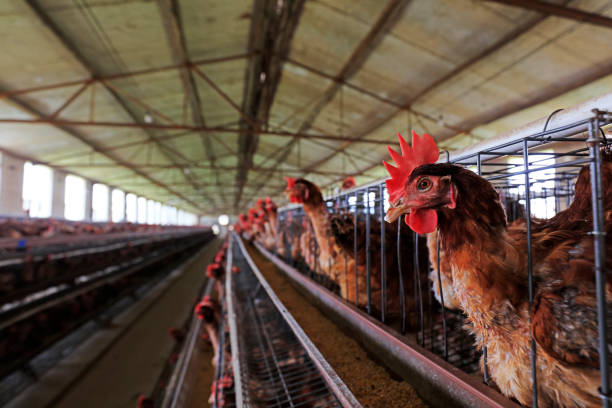
Cage Design and Structure
Tier System: Automatic layer cages are typically arranged in multiple tiers to maximize space utilization. The number of tiers depends on the size of the poultry house and the desired stocking density.
Cage Dimensions: Cage dimensions vary depending on the breed of hen and the desired stocking density. It’s important to choose cages that provide adequate space for the birds to move comfortably.
Material: Cages are typically constructed from galvanized steel or other durable materials that are resistant to corrosion and easy to clean.
Automatic Feeding System
Feed Hoppers: Feed is stored in hoppers and distributed to the cages via a conveyor belt or auger system.
Feed Carts: Feed carts travel along the cages, dispensing feed evenly to each cage.
Feed Level Control: Automatic feed level control ensures that each cage receives the correct amount of feed, minimizing waste and ensuring optimal nutrition for the hens.
Automatic Watering System
Nipple Drinkers: Nipple drinkers provide a constant supply of fresh, clean water to hens. The nipples are designed to release water only when pecked, minimizing wastage and preventing contamination.
Water Lines: Water is supplied to the nipple drinkers via a network of pipes and pressure regulators.
Water Filtration: Water filtration systems remove impurities from the water supply, ensuring that the hens receive clean, healthy drinking water.
Automatic Egg Collection System
Egg Belts: Eggs are gently rolled onto egg belts, which transport them to a central collection point.
Egg Lifts: Egg lifts transport eggs from the lower tiers to the upper tiers for collection.
Egg Counters: Egg counters automatically count the number of eggs collected, providing valuable data for farm management.
Automatic Manure Removal System
Scrapers: Scrapers remove manure from the cages and deposit it onto a conveyor belt.
Conveyor Belts: Conveyor belts transport manure to a storage area or processing facility.
Manure Drying System: Some automatic layer cage systems include a manure drying system, which reduces the moisture content of the manure, making it easier to handle and dispose of.
Factors to Consider When Purchasing Automatic Layer Cages
Choosing the right automatic layer cages is crucial for the success of your poultry farm. Consider the following factors when making your decision:
Farm Size and Capacity
Number of Birds: Determine the number of birds you plan to house in the cages. This will help you determine the size and capacity of the cages you need.
Poultry House Dimensions: Measure the dimensions of your poultry house to ensure that the cages will fit properly.
Future Expansion: Consider your plans for future expansion when choosing automatic layer cages. Choose a system that can be easily expanded as your farm grows.
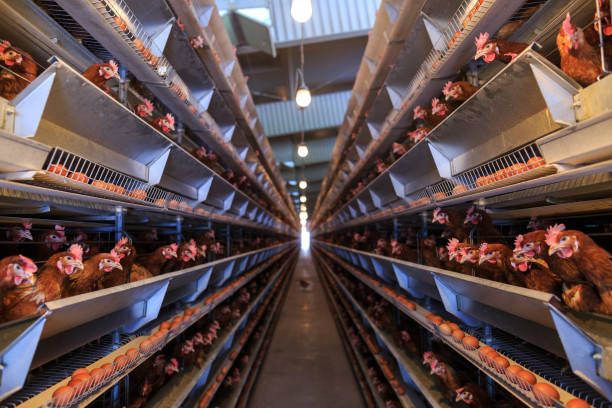
Budget
Initial Investment: Automatic layer cages represent a significant initial investment. Be sure to factor in the cost of the cages, installation, and any necessary infrastructure upgrades.
Operating Costs: Consider the ongoing operating costs associated with automatic layer cages, such as electricity, water, and maintenance.
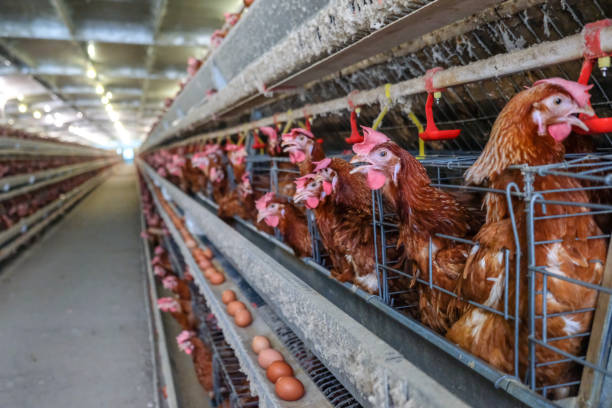
Return on Investment: Calculate the potential return on investment (ROI) for automatic layer cages. Consider factors such as increased egg production, reduced labor costs, and improved bird health.
Cage Quality and Durability
Material: Choose cages that are constructed from high-quality materials that are resistant to corrosion and easy to clean. Galvanized steel is a popular choice for its durability and resistance to rust.
Construction: Ensure that the cages are well-constructed and can withstand the rigors of daily use. Look for sturdy frames, secure welds, and smooth surfaces.
Warranty: Check the warranty offered by the manufacturer. A longer warranty indicates that the manufacturer is confident in the quality and durability of their product.
Automation Level
Full Automation: Full automation includes automated feeding, watering, egg collection, and manure removal. This option requires the highest initial investment but offers the greatest labor savings.
Semi-Automation: Semi-automation may include some automated features, such as feeding and watering, but may require manual egg collection and manure removal.
Manual Systems: While technically not “automatic,” manual cage systems can still offer advantages over floor-based systems, such as improved hygiene and easier bird management.
Supplier Reputation and Support
Experience: Choose a supplier with a proven track record of providing high-quality automatic layer cages.
Customer Service: Look for a supplier that offers excellent customer service and support. They should be able to answer your questions, provide technical assistance, and help you troubleshoot any problems that may arise.
Installation and Training: Ensure that the supplier provides professional installation services and training on how to operate and maintain the cages.
Livi Machinery: Your Trusted Partner for Automatic Layer Cages in India
Livi Machinery is a leading supplier of automatic layer cages in India, offering high-quality products and comprehensive support to poultry farmers. Here’s why Livi Machinery stands out:
Quality and Durability
Livi Machinery’s automatic layer cages are constructed from high-quality galvanized steel, ensuring durability and resistance to corrosion. The cages are designed to withstand the rigors of daily use and provide a comfortable living space for hens.
Advanced Automation Technology
Livi Machinery utilizes advanced automation technology to streamline the egg production process. Their cages feature automatic feeding, watering, egg collection, and manure removal systems, reducing labor costs and improving efficiency.
Customized Solutions
Livi Machinery offers customized solutions to meet the specific needs of each poultry farm. They can design and manufacture cages to fit any size poultry house and accommodate any number of birds.
Competitive Pricing
Livi Machinery offers competitive pricing on their automatic layer cages, making them an affordable option for poultry farmers of all sizes.
Excellent Customer Support
Livi Machinery provides excellent customer support, including installation, training, and ongoing technical assistance. Their team of experienced professionals is always available to answer your questions and help you troubleshoot any problems that may arise.
Comprehensive Service
Livi Machinery offers a complete service package, including:
Consultation: In-depth consultation to understand your specific needs and requirements.
Design: Customized cage design to optimize space utilization and bird welfare.
Manufacturing: High-quality manufacturing using durable materials and advanced technology.
Installation: Professional installation by experienced technicians.
Training: Comprehensive training on how to operate and maintain the cages.
After-Sales Support: Ongoing technical assistance and support.
Conclusion
Investing in automatic layer cages is a smart decision for poultry farmers in India who want to improve efficiency, reduce labor costs, and increase egg production. By considering the factors outlined in this guide and choosing a reputable supplier like Livi Machinery, you can select the perfect automatic layer cage system for your farm and achieve your business goals. With the right system in place, you’ll be well-positioned to thrive in the growing Indian poultry market. Remember to prioritize bird welfare, biosecurity, and long-term sustainability for a successful and ethical poultry farming operation.




